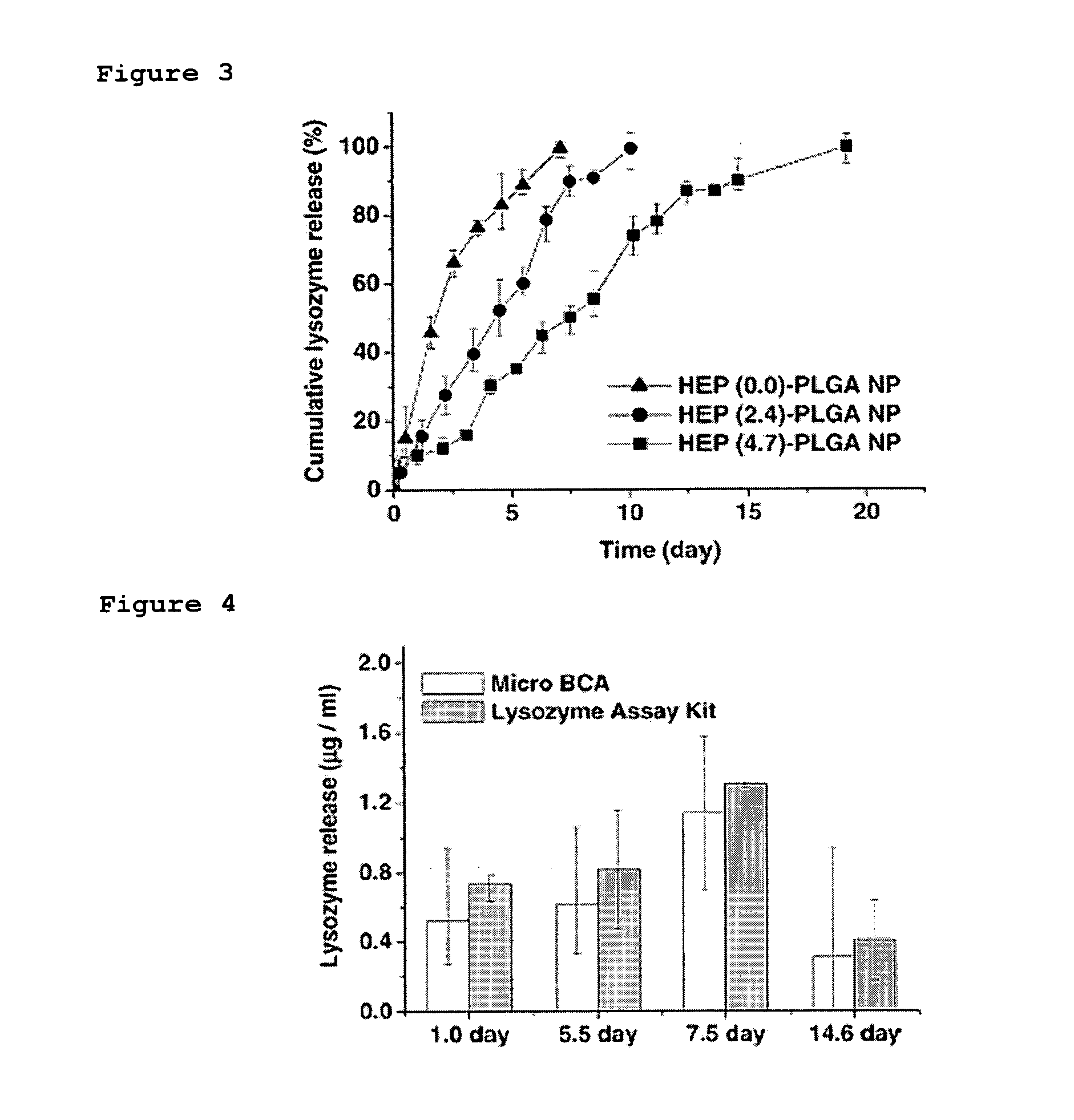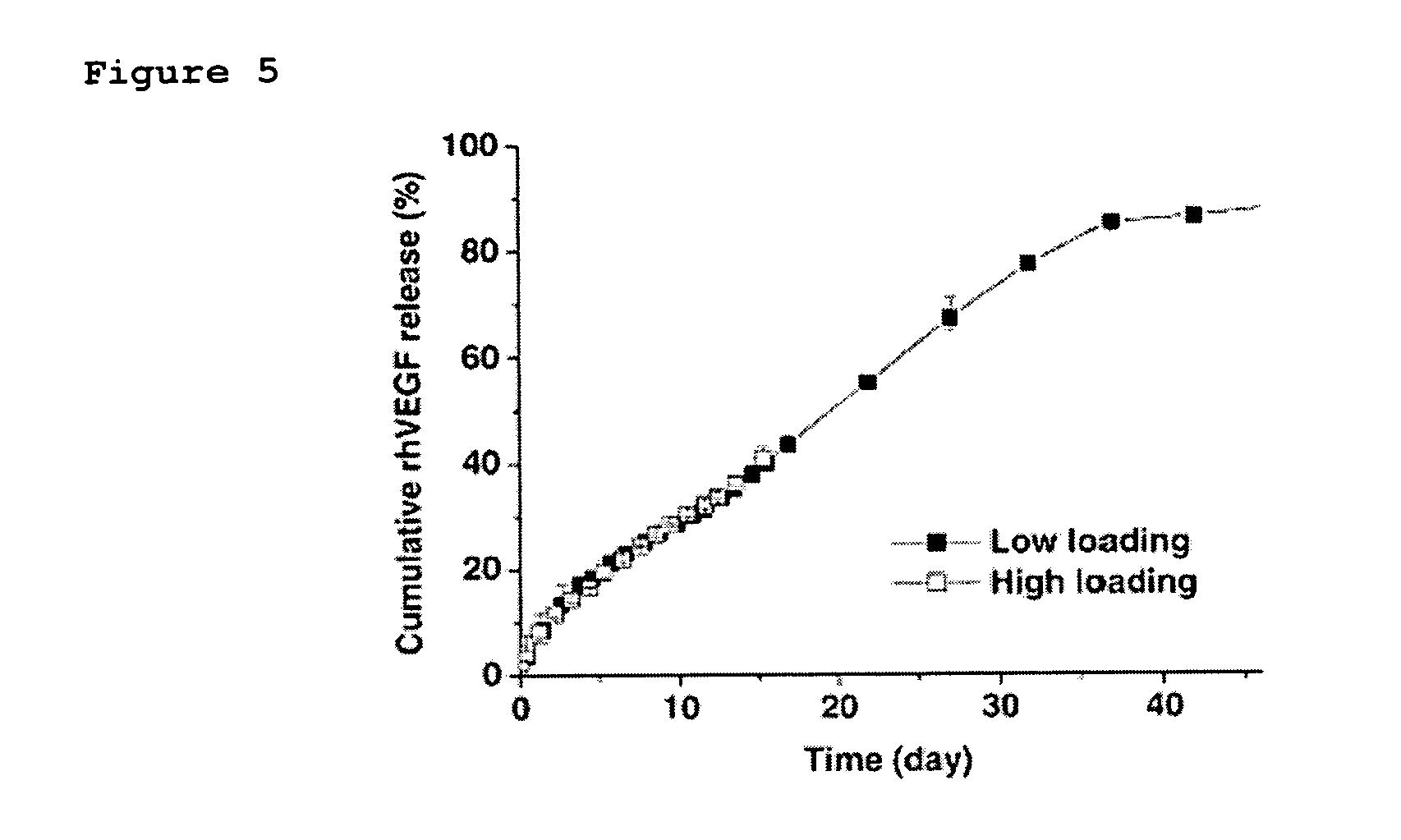Polysaccharide-functionalized nanoparticle, drug delivery system for controlled release comprising the same and preparation method thereof
a polysaccharide and nanoparticle technology, applied in the direction of powder delivery, peptides, microcapsules, etc., can solve the problems of unresolved activity deterioration, large effort and time required to develop a polymer with secured stability, and achieve stable protein drug, prolong release time, and reduce initial burst
- Summary
- Abstract
- Description
- Claims
- Application Information
AI Technical Summary
Benefits of technology
Problems solved by technology
Method used
Image
Examples
examples 1-5
Preparation of Nanoparticle with Heparin-Functionalized Hydrogel Layer
[0043] As shown in FIG. 1, 40 mg of PLGA was completely dissolved in 2 mL of dimethylsulfoxide, and this solution was slowly added in 30 mL of 5% aqueous poloxamer solution containing 10, 30, 60, 120 and 240 mg of heparin, respectively, thus providing heparin-functionalized nanoparticles.
examples 6 & 7
Preparation of Heparin-Functionalized Nanoparticle Loaded with Lysozyme
[0045] After preparing heparin-functionalized nanoparticles in Examples 2 & 4, remaining heparin, poloxamer and dimethylsulfoxide were removed by performing high-speed centrifugation and separating a supernatant liquid. Thus obtained nanoparticles were resuspended in distilled water or PBS solution, and loaded with 1 mg of lysozyme by mixing the resuspended nanoparticles with 0.1 mL of PBS containing 1 mg of lysozyme, followed by incubation at 4° C. overnight with gentle rotation.
examples 8 & 9
Preparation of Heparin-Functionalized Nanoparticle Loaded with VEGF
[0046] The heparin-functionalized nanoparticles prepared in Example 4 were loaded with VEGF as described in Examples 6 & 7. One group of nanoparticles was loaded with 15.6 ng of VEGF and another group was loaded with 156 ng of VEGF based on 1 mg of the nanoparticles.
PUM
| Property | Measurement | Unit |
|---|---|---|
| Diameter | aaaaa | aaaaa |
| Electric potential / voltage | aaaaa | aaaaa |
| Molecular weight | aaaaa | aaaaa |
Abstract
Description
Claims
Application Information
 Login to View More
Login to View More - R&D
- Intellectual Property
- Life Sciences
- Materials
- Tech Scout
- Unparalleled Data Quality
- Higher Quality Content
- 60% Fewer Hallucinations
Browse by: Latest US Patents, China's latest patents, Technical Efficacy Thesaurus, Application Domain, Technology Topic, Popular Technical Reports.
© 2025 PatSnap. All rights reserved.Legal|Privacy policy|Modern Slavery Act Transparency Statement|Sitemap|About US| Contact US: help@patsnap.com



